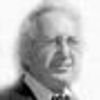Everyone knows the nation's health care bill is too big and that rising medical costs are unsustainable. The politicians, health economists and industry lobbyists have their cost-cutting ideas, and many of them are enshrined in the new health care reform law. But the provisions aren't supposed to rein in costs for years. We can't wait.
Engineers -- that's right, engineers -- also have some thoughts about reducing health care costs. Their ideas aren't incorporated into law and don't usually make headlines. But they have many advantages: They have been tested, are relatively inexpensive to implement and don't require new government regulations.
Working with 20 major hospitals in Los Angeles, Riverside, San Bernardino and San Francisco, a team of USC engineers and students found plenty of low-hanging fruit when it comes to cutting costs. Because health care is a service industry, the time it takes medical professionals to do their jobs is an important variable to study with an eye toward reducing costs. It's also an ideal variable for the engineer's tool kit.
The central question is what happens to patients as they move through a hospital, whether for a simple X-ray or for a complex surgery. Being engineers, we like to quantify things. How long are patients waiting? How often are machines idle? What is a hospital's capacity to conduct CT scans?
Our engineering team found that big savings can be generated by moving patients through a hospital more quickly and efficiently, whether to register, get a CT scan or undergo a complex surgery.
Take mammography. The technicians who perform this procedure often conduct patient interviews - typically lasting about 30 minutes -- in the exam room. That's an enormous waste of exam-room time. By simply moving the interviews to a waiting room, a hospital in the Inland Empire performed 50% more mammograms a day without adding any personnel or equipment. That translates into fewer trips to emergency rooms and saved money. In any other industry, a 5% improvement is considered extremely impressive.
Have you ever seen a CT-scan technician reading a novel when the waiting room is full of patients? We've seen it, and most often it wasn't the techs' fault. It was a bottleneck in the front office, where receptionists failed to realize, or forgot, that the last patient had completed the scan and the room was open. The result is longer waiting times to even schedule a CT-scan appointment and, ultimately, more trips to the ER by patients whose inability to get a timely scan delayed needed medical attention.
An engineering innovation first used in manufacturing - the Lean Method - can unclog the bottleneck. Rather than wait for the front office to "push" the patient to the scan room, the technician should "pull" him from the waiting room. This change can improve patient flow by 30% to 50%.
Moving patients through a hospital more efficiently also means making it less likely that they will have to return. Too often patients are sent home without proper instructions on how to care for themselves. A patient with congestive heart failure, left guessing about what to do, is more likely to be readmitted. Just one averted readmission through better patient instruction can save $5,000 or more.
Eliminating delays, reducing idle time for machines, altering physical layouts to eliminate unnecessary walking, revising job descriptions and/or assignments - these are some of the relatively simple steps hospitals can take on their own to save money and introduce efficiency into their operations. Of course, doctors, nurses and other caregivers -- not just administrators - need to be consulted to ensure a supportive staff.
The new health care law will depend on taxing expensive medical insurance plans, comparative effectiveness studies and rewarding doctors for cost-effective treatments to slow rising costs. These are all worthy ideas. But their success depends on changing patients' extravagant expectations about the care they should receive. That will take time.
By showing them how to move their patients more efficiently, engineers can teach hospitals how to deliver quality health care at lower costs today. The public deserves no less because they end up paying for waste. And you can do all this without having to pass a law. That's efficiency.
David Belson, a professor in the Industrial and Systems Engineering Department at the University of Southern California, works with hospitals to reduce their costs.
